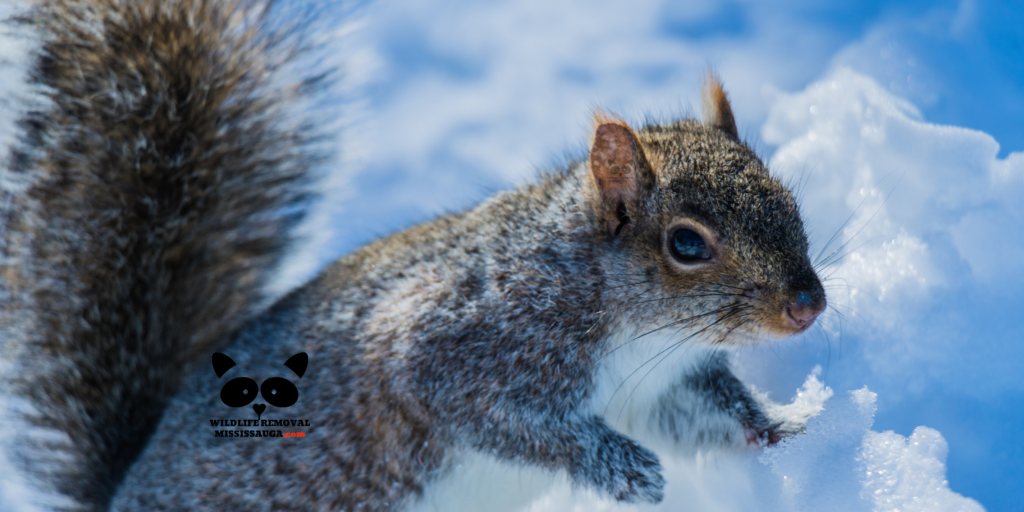Introduction to Squirrel Habitats
In Mississauga’s vibrant tapestry of wildlife, squirrels play a pivotal role, captivating us with their agility and charm. As small mammals, squirrels are noted for their bushy tails and nimble movements, thriving in a variety of habitats across the globe. This comprehensive guide delves into the diverse world of squirrel habitats, exploring the unique environments that these fascinating creatures call home.
Diverse Habitats of Squirrels Worldwide
1. Deciduous Forests:
The Classic Habitat – Deciduous forests, characterized by trees that shed leaves seasonally, represent the quintessential squirrel habitat. These forests provide abundant food sources, such as acorns and nuts, essential for squirrel sustenance. Species like the Eastern Gray Squirrel flourish in these lush environments, adept at navigating the complex canopy of branches.
2. Coniferous Forests:
The Evergreen Realm – Conversely, coniferous forests, dominated by evergreen trees like pines and firs, offer a different ecological niche. Squirrels in these regions, such as the Red Squirrel, adapt to a diet rich in pine cones and seeds. The dense foliage and conical tree shapes create a unique nesting and food storage setting.
3. Urban and Suburban Areas:
Adaptability in Action – Remarkably adaptable, squirrels have also made their way into urban and suburban landscapes. Here, they benefit from human-provided food sources and shelter. Urban parks and backyards become micro-habitats, showcasing the squirrels’ versatility in adjusting to human presence and altered landscapes.
4. Tropical Rainforests:
The Exotic Abode – Tropical rainforests, with their rich biodiversity, also host unique squirrel species. The fascinating flying squirrels, which glide between trees using a special membrane, are a testament to the adaptability of squirrels in diverse environments. These lush habitats provide a year-round supply of fruits and nuts, supporting a varied diet.
- Tropical Red-Tailed Squirrel: Found on Barro Colorado Island (BCI) and in nearby areas, this squirrel is one of the species present in tropical rainforest.
- Amazon Dwarf Squirrel: A species specifically named for its presence in the Amazon rainfores.
- Southern Amazon Red Squirrel: Another species that reside in the Amazon region.
- Black Giant Squirrel: Known for its presence in rainforest environments, as evidenced by sightings in this habitat during meal times.
These species showcase the diversity and adaptation of squirrels to the unique ecosystem of tropical rainforests.

Understanding Squirrel Behaviour in Different Habitats
Nesting and Shelter Squirrel nesting habits vary with habitat. In forests, they construct dreys – nests made of twigs and leaves – high in the trees. Urban squirrels often utilize human structures for shelter, highlighting their adaptability.
Foraging and Diet Squirrels are primarily herbivorous, with diets heavily influenced by their habitats. Forest dwellers rely on nuts and seeds, while urban squirrels exhibit more opportunistic feeding behaviors, often scavenging from human waste.
Seasonal Adaptations Seasonal changes profoundly impact squirrel behavior. In preparation for winter, many species exhibit food caching behavior, storing nuts and seeds to ensure survival during scarce months.
Conservation and Protection of Squirrel Habitats
Threats to Squirrel Habitats
Habitat loss and fragmentation pose significant threats to squirrel populations. Urbanization and deforestation disrupt the ecological balance, impacting food availability and shelter.
Conservation Efforts
Protecting and restoring natural habitats is crucial for squirrel conservation. Efforts include reforestation, protection of existing forests, and creating green spaces in urban areas.

Human Interaction and Impact
Responsible human interaction, such as refraining from feeding squirrels and protecting natural food sources, plays a vital role in maintaining healthy squirrel populations and habitats.
Conclusion: Embracing the Diversity of Squirrel Habitats
Squirrels, with their adaptability and resilience, continue to thrive in various habitats around the world. Understanding and appreciating the diversity of these habitats is key to ensuring their survival and coexistence with humans.
By recognizing the importance of each unique habitat and our role in its preservation, we contribute to the health and continuity of our ecosystems’ charming and vital members.
